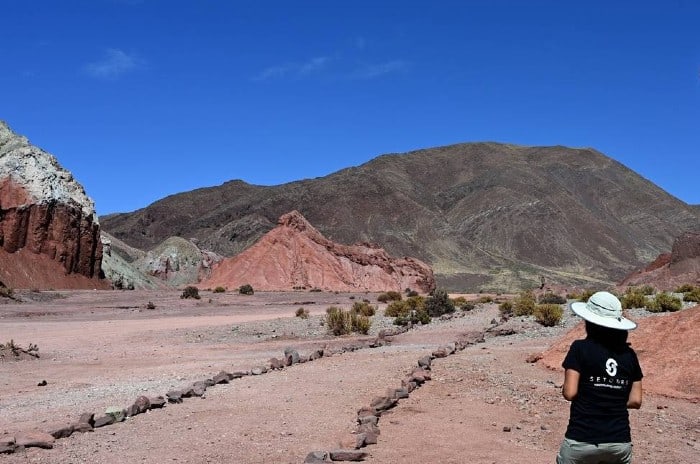
IMPORTANT: The Death Valley and the Pacana Monks are currently closed to tourist visits.
However, an evergrowing number of our clients are looking for a mix of highlights and off-the-beaten-path places to experience the beauty of an outdoor destination like San Pedro de Atacama in a unique way. In this blog post, we will introduce you to other attractions in San Pedro de Atacama that are worth visiting in addition to El Tatio and the Moon Valley.
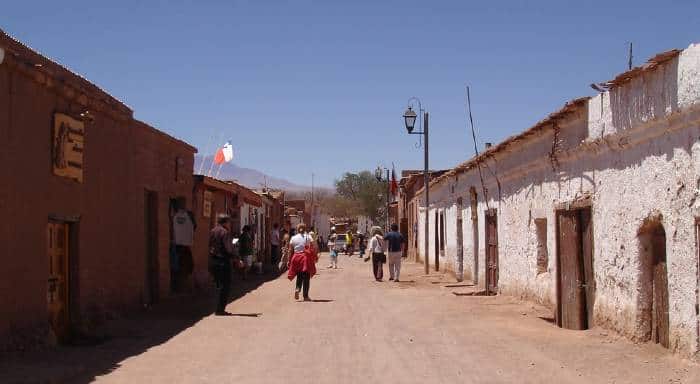
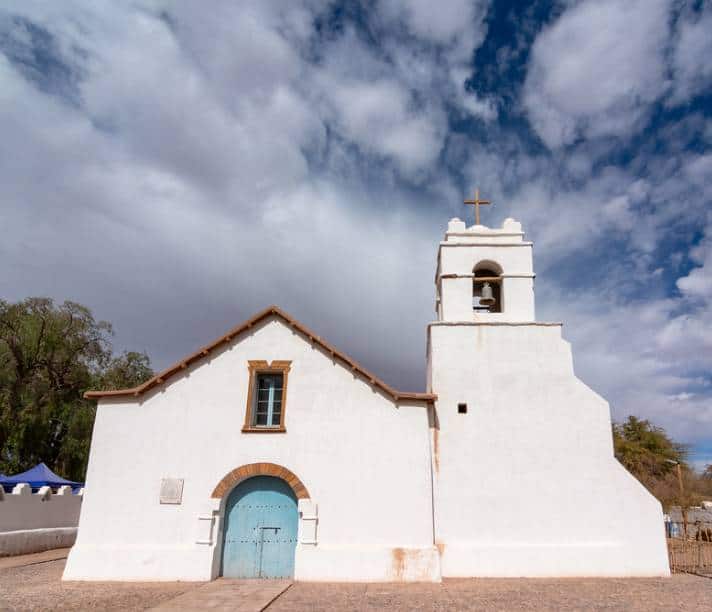
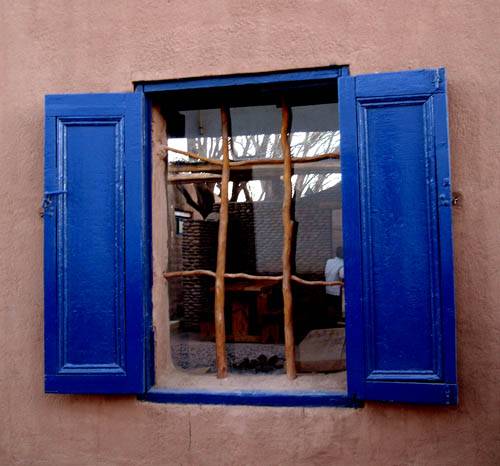
San Pedro de Atacama is a tiny town of rouoghly 10,000 inhabitants living mostly from tourism that mostly visit outdoor attractions. It's important to be mindful of the travel distances involved. As you can see in our map below, most of these are graded roads and gravel-covered, requiring careful driving and a vehicle suited for the terrain.
Additionally, the high altitudes of certain attractions, such as the Tatio Geysers and the Miscanti and Miñiques Lagoons, which sit at an elevation of over 4,000 meters (13,000 feet), can pose challenges for individuals who are not accustomed to high altitudes.
Some travelers plan to visit the Salar de Uyuni, the Green Lagoon and Red Lagoon in Bolivia, and then continue to San Pedro de Atacama. If this is your case, we recommend skipping Miscanti and Miñiques Lagoons and Chaxa Lagoon (in Chile)
The Green and Red Lagoons are very close to Bolivian-Chilean border and also lie at high altitude, the so-called Altiplano. The Red Lagoon features similar wildlife (flamingos) and due to its remoteness is less visited despite its impressive color.
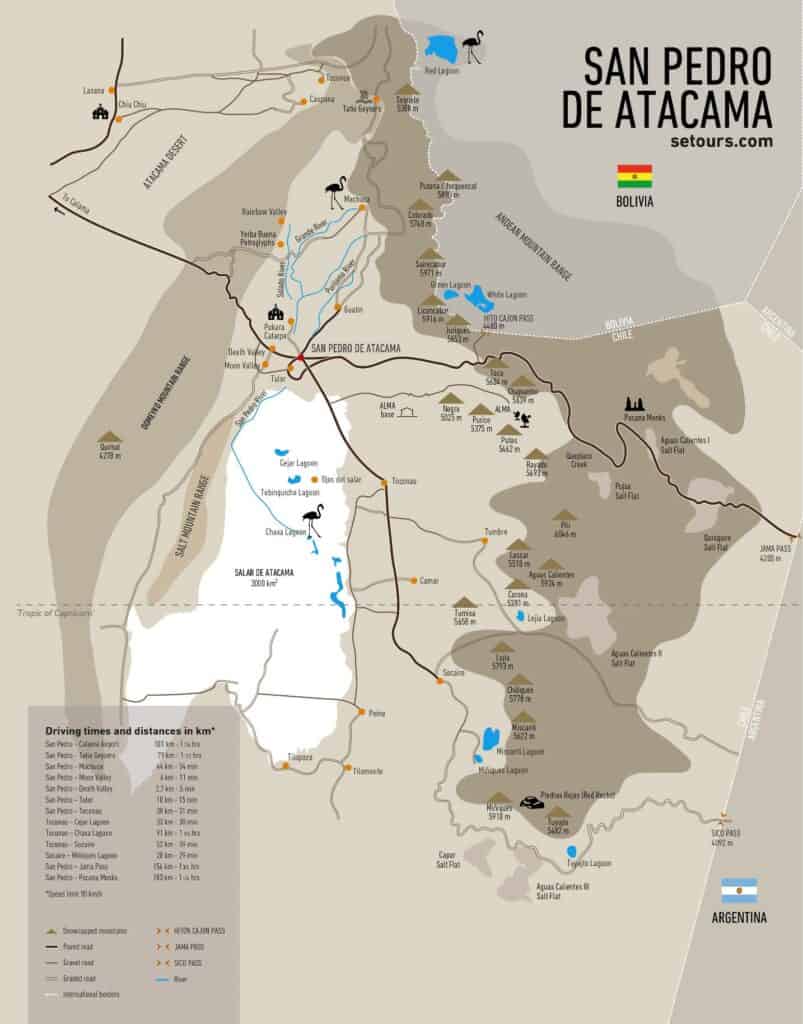
Having hiked the Vinicunca Rainbow Mountain in Peru (at 5,200m) the first place on our bucket list was the ‘Rainbow Valley and Yerba Buena Petroglyphs'. I wanted to compare both places that feature a vibrant collection of multicolored geological formations.
The Rainbow Valley in San Pedro de Atacama lies at a lower altitude (3,500m). It impressed us with the intensity of colors, although I would classify it as a circular soft walk over a hike that takes about an hour to complete
It wasn’t crowded at all and we had enough opportunities to take pictures of us 'in action' without other travelers in the background.
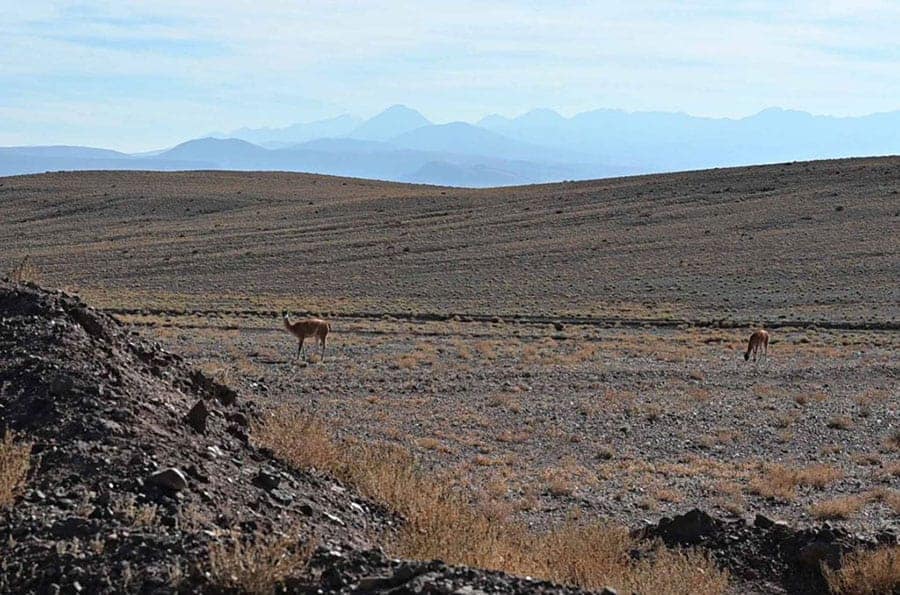
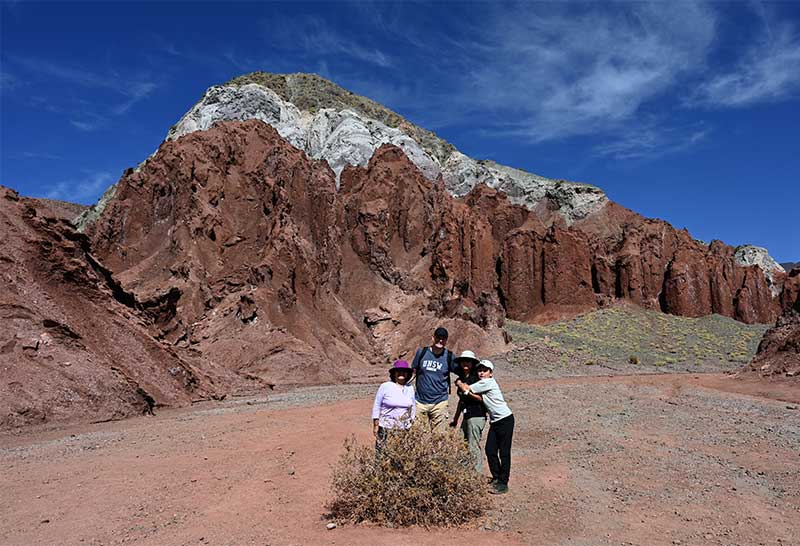
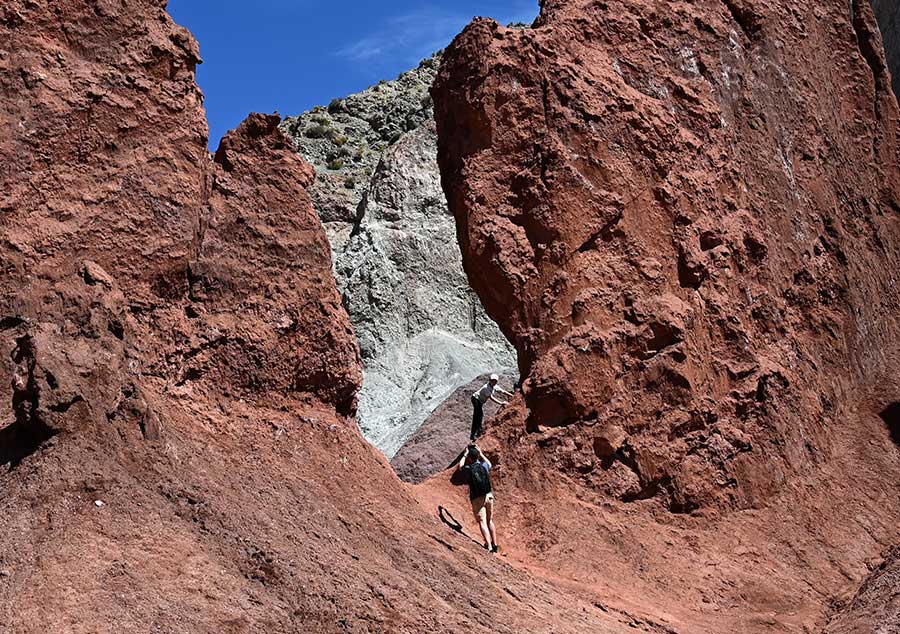
Nestled within the Domeyko Mountain Range, the Rainbow Valley has a creation story that spans several hundred million years. Our guide took the time to patiently explain it all to us.
Interesting is that the Domeyko Mountain Range is considered a part of the Andes and that it is actually much older.
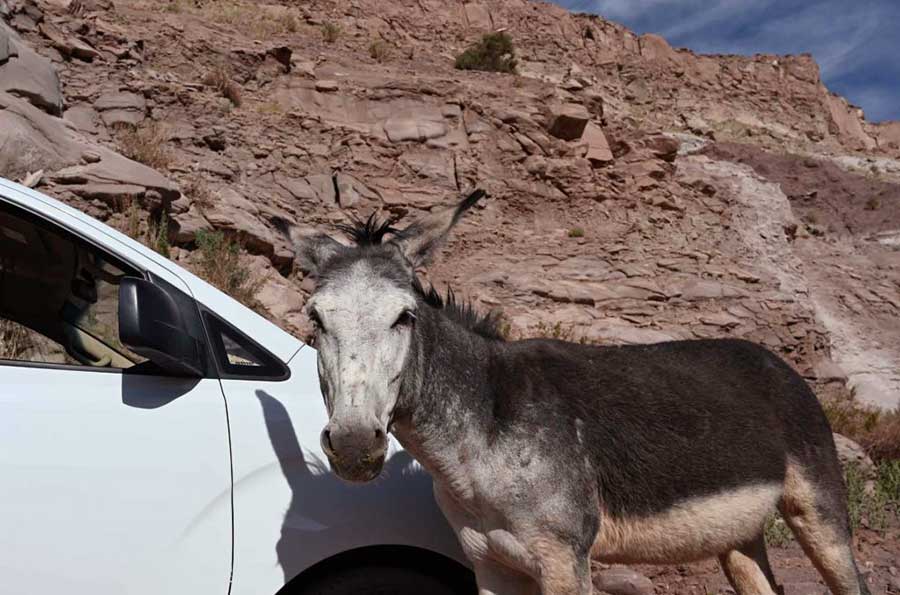
We recommend leaving as early as possible from the hotel (we decided to skip breakfast) for the best light for our pictures. Our guide and driver surprised us with a light breakfast before heading to Yerba Buena (3050m) to see its petroglyphs. At the time we went there, unlike most of the places we visited, there were no public toilets (so ask your guide for updated information before drinking plenty of water and coffee which is permanently recommended in San Pedro).
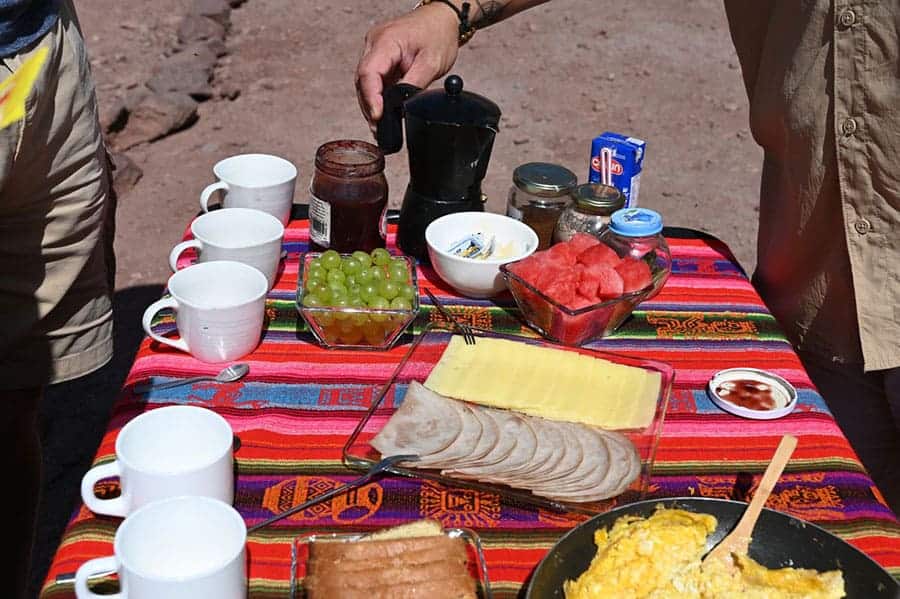
Throughout Chile, there are expressions of rock art left behind by different people that inhabited the country’s diverse regions. The Atacama region is impressive in this regard with the first of many surprise locations being Yerba Buena (60km from San Pedro).
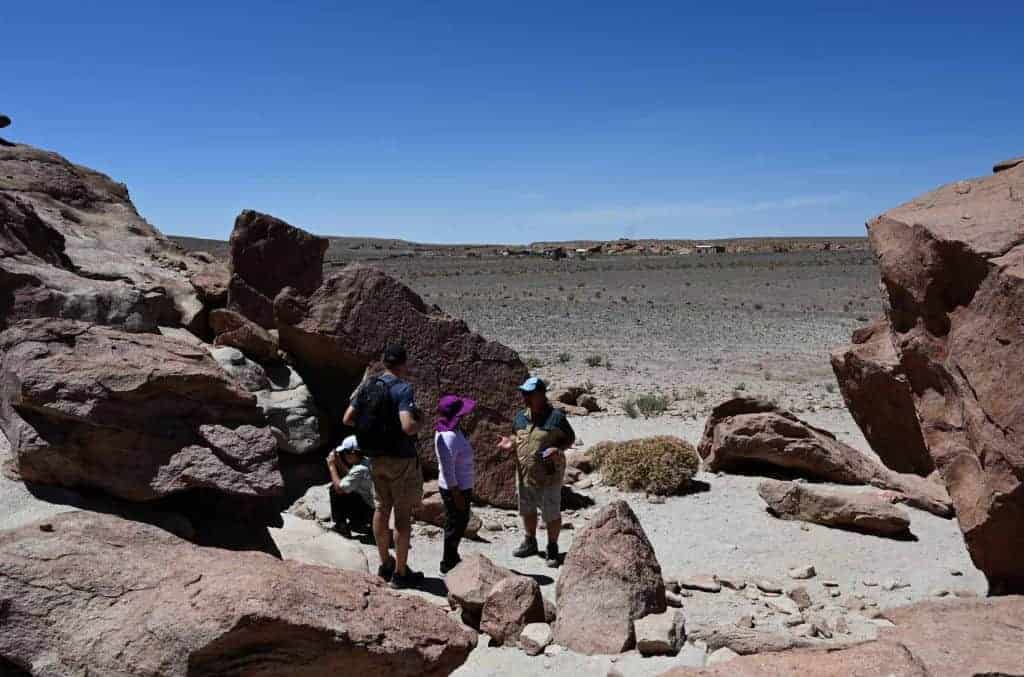
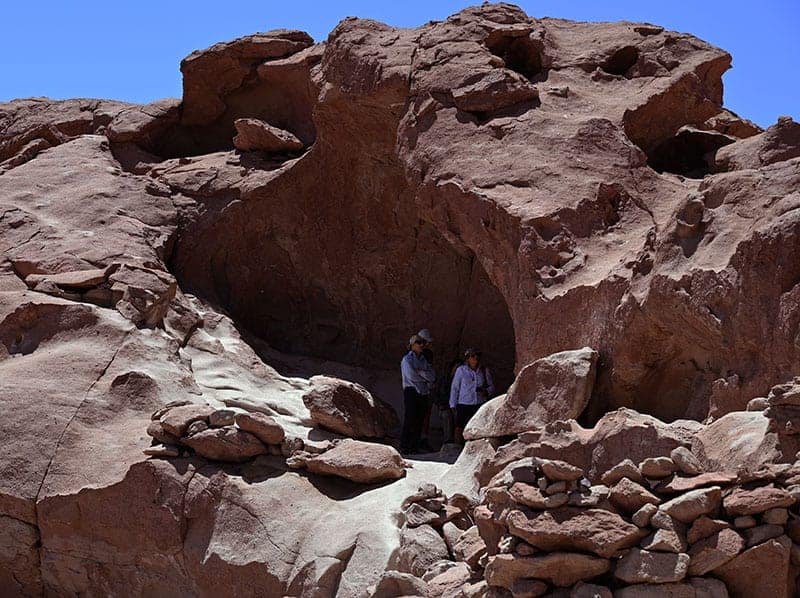
We could see engravings of llamas, foxes and the ‘Lord of Camelids’ created in a variety of styles. Researchers estimate that the first figures at the rock shelter were created between 800 and 400 BC.


Having our child along for the journey, we decided to combine the Chaxa Lagoon with the Tebinquiche and Cejar Lagoons (rather than with Toconao town). He has never been to Israel (and the Dead Sea) and he couldn’t wait to experience the effect of the high concentration of salt in a lagoon that would allow him to float like a buoy above the water!
Despite the number of travelers, Chaxa Lagoon, in the heart of the Atamaca Salt Flats (covering an area of 3000 km²), impressed us with its awe-inspiring views of Cordillera de la Sal.
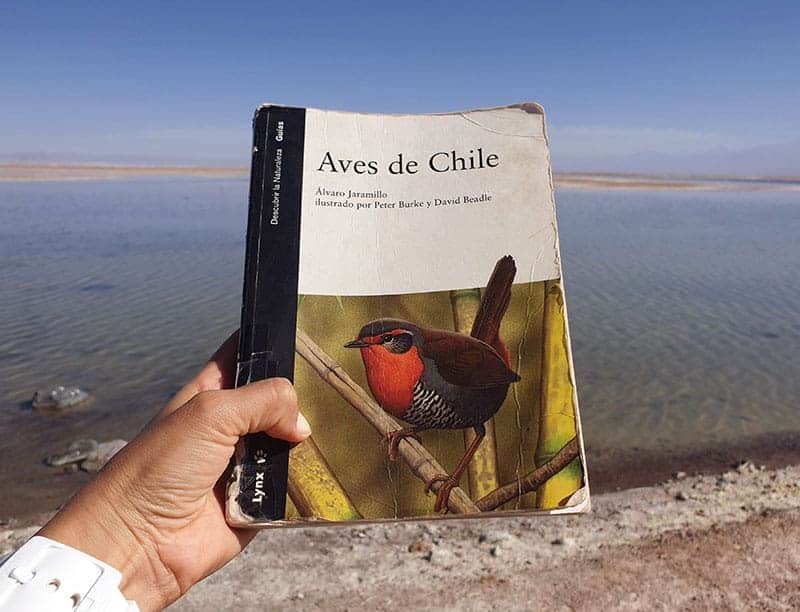

Our guide said that the number of flamingos has sadly declined over the past few years. Despite this fact, we could still see many from a distance.
For our boy, it was the highlight of the day to be able to see and photograph two different flamingo species: The James and the Chilean flamingo.
Bring a camera with a telephoto lens if you want some close-up shots as they do not allow for visitors to come too close so as not to disrupt their natural habitat.
The James flamingo, which can be only seen in the Andes (Peru, Bolivia, Northern Chile and Northwest Argentina) is the palest and the smallest of the South American flamingos. The adult has pale pink plumage with bright carmine streaks on its breast and back. Juveniles are pale greyish with fine blackish streaks on their upperparts.

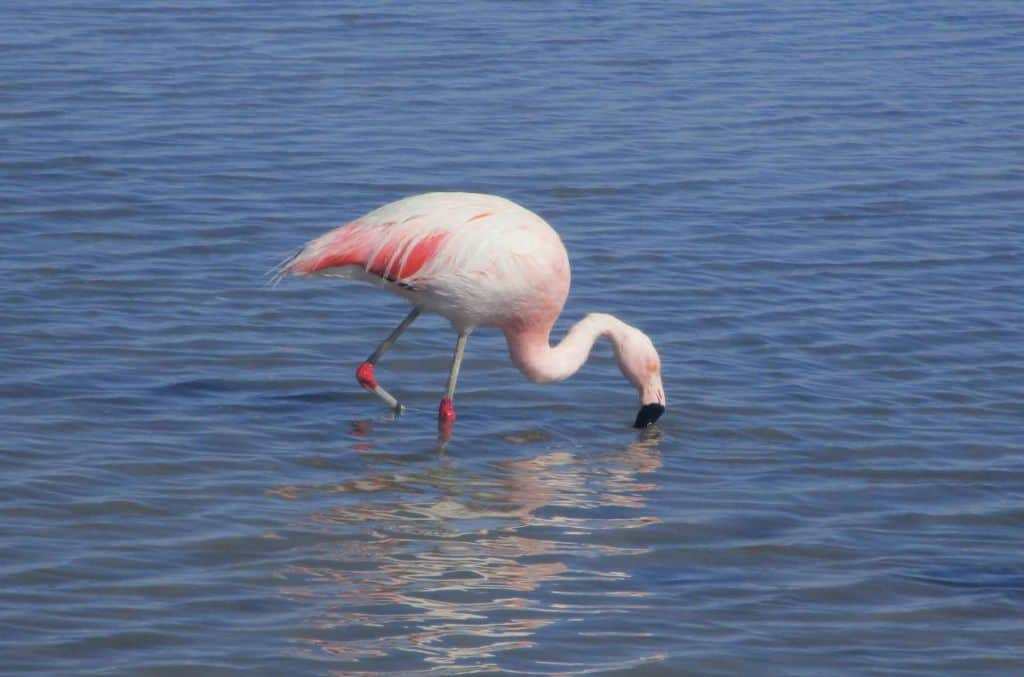
Widespread and often in larger numbers, you can recognize the Chilean flamingo immediately by its grayish legs with red ‘knees’.
Do you know the meaning of the stromatolite?
Well, we didn’t, so our guide was patient enough to explain the relationship between ‘Origin’ and ‘Tebinquiche’. In short, stromatolites are the oldest fossil records of life on Earth (dating back over 3.7 billion years).
Stromatolites are formed by bacteria that were among the earliest photosynthesizers, responsible for starting the process that boosted the oxygen in the atmosphere from less than 1% to more than 20%. Only a handful of locations have been found with active stromatolites and one such place is Tebinquiche. There was absolutely nobody there.


The long-awaited stop at Cejar was finally here. We also saw some guests from Explora Atacama there. Similarly, as with us, their guide and driver were waiting with a glass of wine and snacks after relaxing in the water.
Our guide said that only a few travelers are usually seen here as this is one of the most expensive entrance fees in the area.
It was good to see that the local community were so well organized. There are clean showers and changing rooms (everyone wanting to take a dip in Cejar Lagoon has to take a shower before in order to reduce the amount of sunblock in the water).


Many people say that there are no better stargazing opportunities in the world than in the Atacama Desert in Chile. We didn't want to miss out on this experience in San Pedro. Hotels in the premium segment, such as Tierra Atacama, Explora, and Nayara Alto Atacama, boast the unique feature of having their own telescopes.
The French astronomer Alain Maury is a pioneer in providing celestial discovery tours for both uninformed audiences and amateur astronomers alike. In its inventory, SpaceObs, his company, possesses three telescopes, one of which is recognized as the largest privately owned telescope in the region.
Our tips
The long wait paid off in our case 🙂




For the real astronomy buffs, we recommend booking a visit to the ALMA observatory, the world's largest ground-based facility for observations.
ALMA (50 km from San Pedro) is open every Saturday and Sunday morning to the public. Visitors must register in advance by filling this online form (to obtain a free entry pass).
Visitors will gain access to the ALMA Operations Support Facility (OSF), where the staff work and can see the control room, laboratories and antennas under maintenance (if available). The antennas are located on the Chajnantor Plateau (at 5,000m) but can’t be visited (due to safety reasons).
But, not to worry, here is a link to a fascinating virtual tour.
Our tip: even if you don’t receive the confirmation, make sure that you apply for the waiting list.
Peter tried his luck while in San Pedro and headed to the meeting point where the ALMA bus picks up the visitors and brings them to the OSF. All the visitors who had registered for the waiting list could be taken (as some confirmed visitors didn’t show up). The bus leaves at 09:00 and returns to the meeting point at 1:00 pm. There is no chance to reach ALMA with a private vehicle if you miss the bus.
In April 2019 it was possible to see the first picture of a black hole at ALMA !
Curious to find out more? Take a look at this video
With our child in the party, we wanted to do something exciting. We were recommended a drive to the Death Valley (2 kilometers from San Pedro de Atacama). This place is one of the best spots in Chile to glide down massive sand dunes (sitting at 150 meters high).
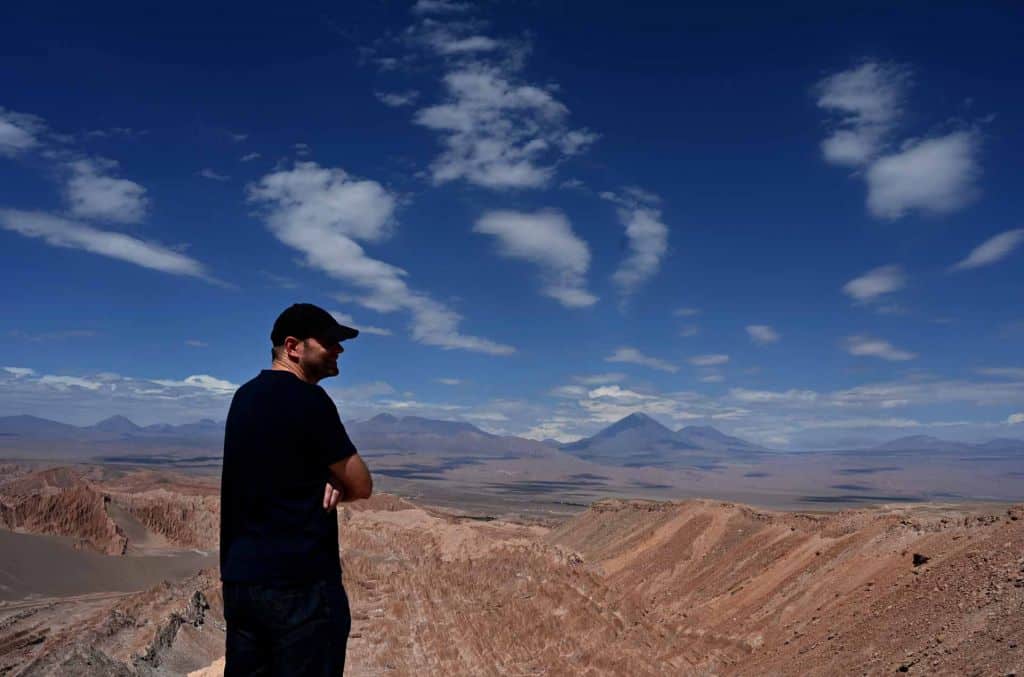
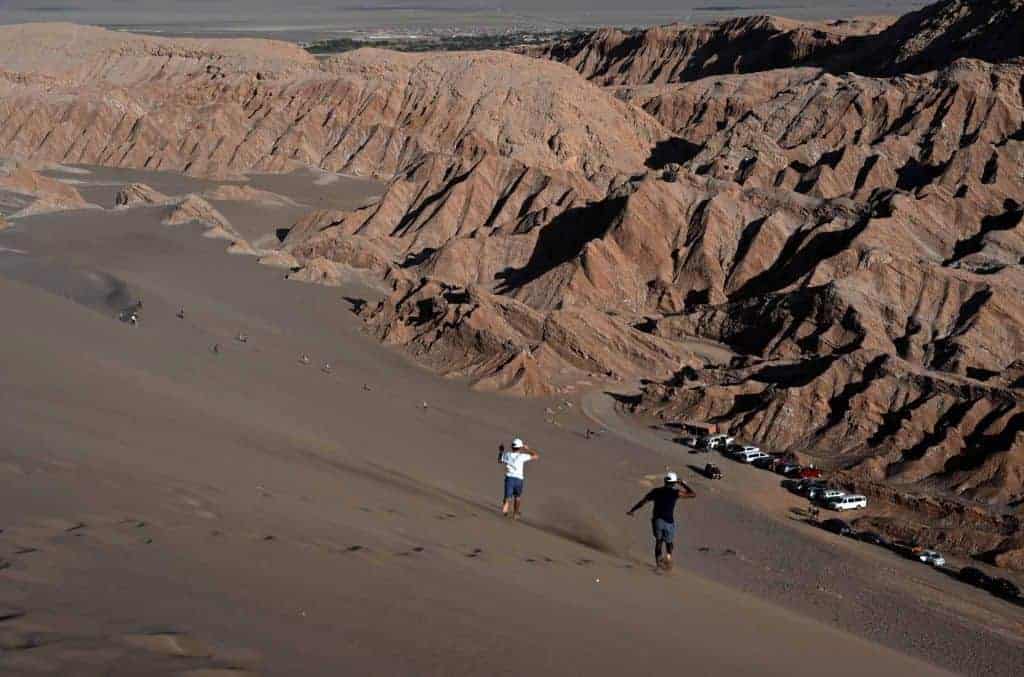
The stunning views of the valley and the Licancabur volcano before sunset only top off the already amazing experience.
We were impressed by the topographic formations and dunes surrounding the valley with the San Pedro de Atacama town in the background.
Our guide Joel went on to explain to us too that we were in an incredibly special place.
We spent a few minutes embracing the views of the Licancabur Volcano, a peak of conical perfection, the Salt Mountain Range, the Domeyko Mountain Range and the Andes.
After recording our experience with many pictures and short videos we returned to San Pedro town to sample some empanadas and follow our guide’s tip.
Later we dared to sample a ‘Rica Rica’Sour – a Pisco Sour infused with rica rica herb. An absolute must while visiting San Pedro.


This trip has been truly unforgettable. Based on our experience, we highly recommend allocating a minimum of four days for exploring the mesmerizing Atacama Desert. This timeframe allows you to fully immerse yourself in the must-see attractions while also venturing into the surreal and lesser-known outdoor destinations that lie off the beaten path.
One of the richest experiences for us was the chance to listen to our drivers and guides that shared their point of view with us, to learn from them about the Chilean society and reality. Of course, as everywhere in Latin America, mixed with funny anecdotes and incredible stories of San Pedro before it was discovered by tourism.
Despite being known as the driest desert in the world, even the Atacama Desert has not been immune to the effects of climate change. In recent years, there has been an observable impact, with an increase in rainfall during the weeks of January and February ('Bolivian Autumn').
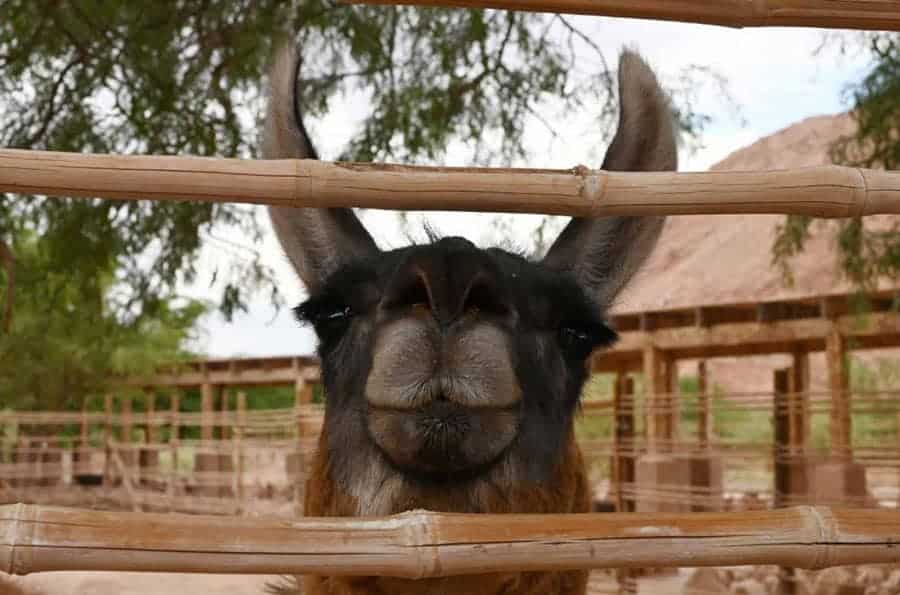
San Pedro de Atacama has a whole range of accommodation options. At the top of the accommodation pyramid, there are 3* star hotels to five high-end luxury resorts being our favorites: